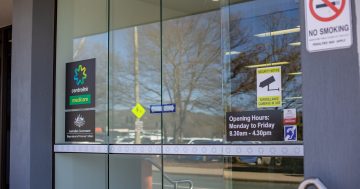 1. This week 10 years ago, the Ambulance Service of NSW released figures showing that domestic animals were more likely to cause people harm than the usual wild suspects such as sharks.
1. This week 10 years ago, the Ambulance Service of NSW released figures showing that domestic animals were more likely to cause people harm than the usual wild suspects such as sharks.
From 1 September 2012 to 31 January 2013, NSW paramedics treated at least 237 people for dog bites and attacks and 22 people for injuries involving cats.
Two people were treated for guinea pig bite wounds, while horses accounted for 15 responses.
Farmers also suffered, with nine incidents involving people being either trampled, charged or kicked.
In comparison, the more obscure attacks involved stingrays, two attacks by sharks, one by a water buffalo and one blue-ringed octopus envenomation. The Ambulance Service said puncture wounds caused by an animal should always be assessed and cleaned by a healthcare professional.
2. Victoria Police Deputy Commissioner, Graham Ashton announced the formation of the Sporting Integrity Intelligence Unit in response to the Australian Crime Commission’s Organised Crime and Drugs in Sport report, to be housed within the Intelligence and Covert Support Department and led by a detective sergeant tasked with gathering and assessing information about criminal activities in sport and links to organised crime.
“Victoria Police has been working closely with the Racing Integrity Commissioner, law enforcement agencies, and national sporting bodies regarding the broad issue of integrity in sport,” Deputy Commissioner Ashton said.
3. In Queensland, the Crime and Misconduct Commission (CMC) reported 5,303 complaints of misconduct within public sector Agencies, Police and Local Government in 2011–12, which was the highest since the Commission was established in 2001.
The CMC report said the upward trend was partly attributable to public sector employees’ increasing awareness of the need to report official misconduct, and the complaints contained 12,559 allegations: 49 per cent involving police, 43 per cent PS departments, Government Owned Corporations and other public sector bodies, and 8 per cent for Local Government.
“As a result of our investigations, we made 182 recommendations to help prevent misconduct, 60 recommendations for disciplinary action and 10 recommendations for criminal charges,” the CMC report said.
4. New laws were introduced into the South Australian Parliament as part of a national approach to regulate the private security industry, with Attorney-General, John Rau saying they created seven classifications, consistent across Australia, of licensable activity and implemented a minimum list of disqualifying offences.
Mr Rau said it would require individual trainers to comply with the same probity requirements as members of the private security industry and improve security training standards by requiring all businesses providing security industry training to be approved.
“The security industry plays a significant and growing role in maintaining safety in a number of spaces, including licensed venues and community events,” Mr Rau said.
“It is important that the public has confidence in this industry and that it is properly and consistently regulated.”
5. The South Australian Research and Development Institute (SARDI) and the Department of Environment, Water and Natural Resources (DEWNR) completed the State’s 25th annual New Zealand fur seal count on Kangaroo Island.
Leader of SARDI’s Threatened, Endangered and Protected Species subprogram, Associate Professor Simon Goldsworthy said there had been an average 10 per cent annual increase in seal pup numbers since the first count in 1989, although this survey found a slight downturn of 5 per cent from the previous year.
Associate Professor Goldsworthy said the surveys provided a baseline of information to better understand variations in other populations that could not be so consistently monitored.
6. And a decade ago, Western Australia’s resources sector achieved its first fatality-free year on record, with Minister for Mines and Petroleum, Norman Moore attributing the milestone to the high safety standards being enforced by the Department of Mines and Petroleum and the hard work of operators and companies to adopt resilient safety cultures with the aim of achieving “zero harm”.
“This is a very significant achievement and one the WA resources industry should look to emulate in each and every year ahead,” Mr Moore said.
“It is particularly pleasing when you consider there are now more people than ever before working in the WA resources industry: 98,000 workers.”











